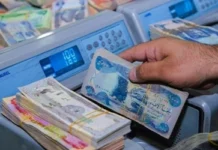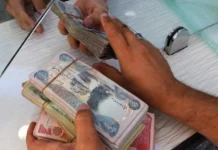Good afternoon/evening ,
XRP Goes Global: Research Reveals Institutional Use Across All 7 Continents
Ripple is rapidly expanding its international footprint through global partnerships and focusing on expanding the use of the XRP Ledger.
Ripple is advancing in South America with its CBDC platform, collaborating with the Bank of Colombia and Brazil’s Fenasbac.
Blockchain startup Ripple has been making every possible effort lately to promote the adoption of its XRP Ledger and the use of XRP in the global financial markets.
Tokenicer, an enterprise blockchain researcher, recently stated that despite Ripple’s ongoing legal battle with the U.S. Securities and Exchange Commission (SEC), the company has been swiftly expanding its global partnerships and services in different regions outside the United States. As reported by Crypto News Flash, Ripple has signed 1,700 agreements with global financial players to boost XRP use.
Although America-based firms have been hesitant to partner with Ripple amid legal considerations, companies overseas have been quite flexible in adopting the Ripple technology. The XRP Ledger facilitates instant cross-border settlements by using Ripple’s native XRP cryptocurrency for settlements. As per the CNF report, Ripple is further expanding the use of XRP Ledger by working on stablecoin integration backed by Gold and Silver, moving beyond the boundaries of fiat settlements on XRPL.
Ripple Eyes Big Opportunity in South America and Europe
Ripple is seeing major advancements in the South American market, particularly with the release of the central bank’s digital currency (CBDC) platform. Last year, Ripple launched its CBDC platform, making it easy for central banks worldwide to quickly launch their CBDC, where Ripple does all the infrastructure-heavy lifting. As a result, the Bank of Colombia has been testing its CBDC on the Ripple platform.
Furthermore, Ripple has joined hands with Brazil’s National Federation of Associations of Central Bank Servers (Fenasbac), which seeks to boost the country’s financial sector through advancements in tokenization, payments, and treasury management.
Europe is another region where Ripple’s influence is growing gradually. Earlier this year, Ripple partnered with Clear Junction to facilitate instant cross-border settlements between the UK and the European Union, per the CNF report. This partnership, regulated by the Financial Conduct Authority (FCA), positions Ripple as a compliant and trustworthy European partner.
On the other hand, the Central Bank of Montenegro is also testing its CBDC on the Ripple platform, while Germany’s DZ bank integrated with Metaco, Ripple’s acquired digital asset custody firm.
Expanding into Asia and the Middle East for XRP Use
Ripple has always maintained a stronghold in the Asian and Middle East markets by working with partners such as SBI Holdings since 2016. This collaboration has led to key advancements for the blockchain startup, such as the use of XRP for cross-border remittances across Vietnam, the Philippines, and Indonesia. These countries are currently the fastest-growing remittance markets globally.
Furthermore, Ripple also secured an MPI license from the Monetary Authority of Singapore (MAS), which allows it to expand its services in the region. Ripple has also expanded its presence in the Middle East through its strong connections in Dubai. The company’s partnership with the Dubai International Financial Centre aims to advance blockchain adoption in the United Arab Emirates (UAE).
@ Newshounds News™
Source: Crypto News Flash
~~~~~~~~~
India’s crypto future hinges on gov’t consultation paper
India’s Department of Economic Affairs’ consultation paper is expected to be a watershed moment for crypto regulation in the country, potentially setting the stage for future legislation.
India’s cryptocurrency landscape could be about to change as the Department of Economic Affairs (DEA) prepares a key consultation paper on cryptocurrency legislation.
According to local media, the paper, which is expected in September or October, will invite feedback from various stakeholders, with the government playing an active role in the direction of digital currencies in India.
India’s crypto conundrum
The paper, led by a panel chaired by the secretary of the DEA, represents a significant step in India’s ongoing effort to balance innovation and regulation in its rapidly evolving crypto sector.
The release comes at a time when global scrutiny of cryptocurrencies is intensifying, particularly in light of the G20 nations’ unified approach to regulation, as highlighted by Indian Finance Minister Nirmala Sitharaman at a meeting of the group of nations in October 2023.
India, which has already implemented a stringent tax regime on cryptocurrency transactions, has taken a cautious approach to regulation. The 30% tax on unrealized crypto gains and a 1% tax deducted at source implemented in April 2022 marked the government’s first major move toward imposing some control over the crypto market.
However, despite the measures, the Indian government has refrained from regulating the sale and purchase of cryptocurrencies, focusing instead on curbing crypto-related money laundering and terrorism financing.
DEA paper to address regulatory concerns
The DEA’s forthcoming paper is expected to address the broader concerns surrounding the regulation of crypto assets, including those raised by the Securities and Exchange Board of India (SEBI) and the Reserve Bank of India (RBI).
In May, SEBI suggested a multi-regulatory approach, wherein different aspects of cryptocurrency trading would be overseen by various financial authorities. This fragmented approach underscores the complexity of regulating a technology that crosses traditional financial boundaries and poses unique challenges.
On the other hand, the RBI has consistently warned of the macroeconomic risks posed by digital currencies. The central bank’s stance reflects deep concerns about the potential impact of cryptocurrencies on India’s economic stability.
This caution is mirrored in the government’s recent actions against offshore crypto platforms and digital asset service providers, including a high-profile ban on Binance, the world’s largest cryptocurrency exchange.
Despite this, Binance managed to reestablish its presence in India by registering with the Financial Intelligence Unit, even as it faces a hefty $86 million tax demand from Indian authorities.
@ Newshounds News™
Source: CoinTelegraph
~~~~~~~~~
ICMA updates repo agreement for digital assets
The International Capital Market Association (ICMA) has published a digital assets annex for its Global Master Repurchase (repo) Agreement (GMRA). The Annex follows work by ICMA and ISLA in the Digital Assets Legal Working Group, with Clifford Chance appointed as counsel.
Repo involves the sale of collateral, usually securities, with an agreement to buy them back at a future date for a slightly higher amount representing interest.
There are already two significant intraday repo solutions with a third in progress. JP Morgan has an intraday solution for its clients, and technology firm Broadridge has its Distributed Ledger Repo (DLR) solution that processes $1.5 trillion in transactions monthly.
In Europe, HQLAᵡ has been running a DLT based solution for collateral mobility for a few years. It recently conducted end-to-end repo tests with Fnality, the institutional settlement system where the settlement tokens are backed by cash held in a central bank account. The goal is to support intraday repo for trades on the Eurex Repo F7 system. Fnality is awaiting regulatory approval for its participation and hopes to launch later this year.
By including the ICMA digital assets annex, transactions can include digital cash and/or digital securities.
The digital assets Annex
The GMRA Annex specifies various terms, such as an “Asset-backed Digital Asset” that includes a tokenized traditional security or contractual claim on an underlying asset. Digital cash could be central bank digital currency, tokenized deposits, electronic money tokens or other cryptographically secured representations of a single fiat currency.
If we’re not mistaken, the agreement might also account for HQLAᵡ, where custodians effectively lock conventional assets and DLT is used to transfer ownership. We guessed this from the reference to a “Platform Transferred Security” which is a conventional security that’s capable of being transferred cryptographically.
Support for intraday transactions
Until recently, conventional repo transactions have been constrained by the settlement delays for securities transactions. One of the key innovations of combining DLT with repo is the ability to settle instantly, which enables intraday repo where the repurchase happens at a precise time.
The existing agreement did not account for settlement at specific times, hence the Annex includes wording to support this. Additionally, there are adjustments to interest calculations given they need to account for hours rather than days.
“We hope the Digital Assets Annex will assist the further growth of the market by presenting a common approach that firms can leverage for transactions referencing the relevant categories of digital asset,” said Michael Brown, partner at Clifford Chance.
@ Newshounds News™
Source: Ledger Insights
~~~~~~~~~
Newshound’s Currency Facts Youtube and Rumble
Newshound’s Podcast Link
Newshound’s News Telegram Room Link
Q & A Classroom Link
Follow the Roadmap
Follow the Timeline
Seeds of Wisdom Team™ Website
Subscribe to Newsletter






